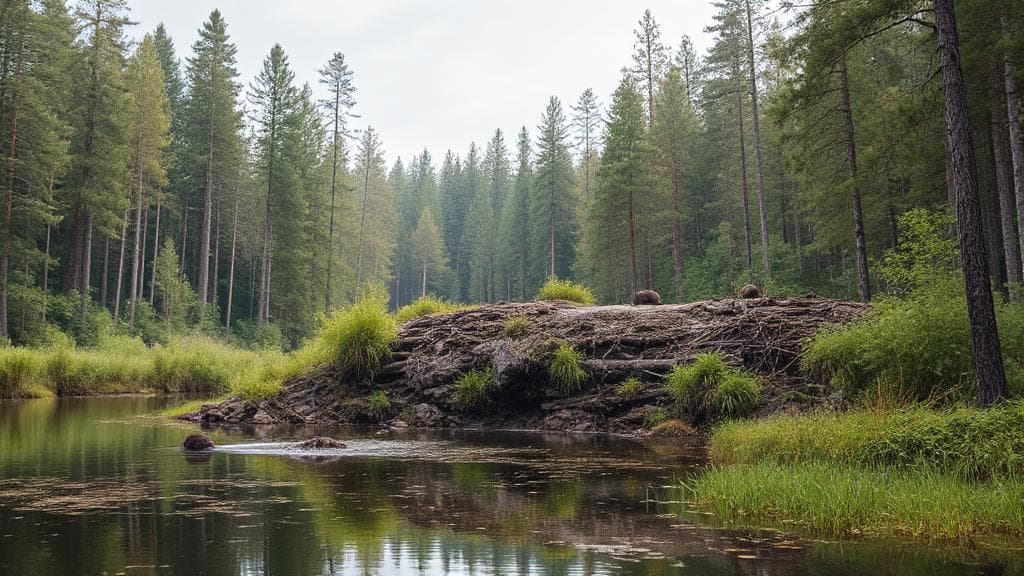Understanding Beaver Dams
Beaver dams are remarkable feats of natural engineering, constructed by beavers using a combination of sticks, mud, and stones. These industrious rodents, particularly the Castor canadensis, create structures that fundamentally transform landscapes and provide essential ecological services.
The Construction Process
Beavers are meticulous builders who start by selecting a suitable location, usually a stream or small river. Using their strong teeth, they cut down trees and branches, which they drag to the construction site. The dam is built by interweaving these materials and sealing them with mud and stones to ensure stability and water resistance.
Primary Functions
Water Management and Home Construction
The primary purpose is to create a pond of still water that serves multiple functions:
- Safe access to food during winter months
- Protection from predators
- Stable water levels during drought periods
- Protection of lodge entrances
- Prevention of water freezing to bottom in winter
- Underwater food storage
- Safe transport of building materials
Ecological Benefits
Water Quality Enhancement
Beaver dams significantly improve water quality by:
- Filtering out sediments
- Removing excess nutrients
- Reducing downstream pollution
- Neutralizing acidic water conditions
Habitat Creation and Biodiversity
"Beaver ponds create wetland habitats that support approximately 50% of North America's threatened or endangered species." - National Wildlife Federation
The presence of beaver dams increases ecosystem complexity and supports numerous species:
- Waterfowl
- Fish
- Amphibians
- Reptiles
- Mammals
- Invertebrates
Climate Change Mitigation and Flood Control
Beaver dams contribute to climate resilience and flood control by:
- Creating natural firebreaks
- Maintaining water tables during drought
- Storing carbon in sediments
- Reducing peak flood flows
- Spreading water across floodplains
Economic Value
The ecosystem services provided by beaver dams have significant economic benefits:
| Service | Estimated Annual Value |
|---|---|
| Water Storage | $10,000-15,000 per dam |
| Flood Control | $18,000-26,000 per dam |
| Water Quality | $21,000-31,000 per dam |
Challenges and Management
While beaver dams offer numerous benefits, they can pose challenges in human-dominated landscapes. Modern management approaches include:
Management Strategies
To address these challenges:
- Beaver Management Plans: Developing comprehensive plans that balance ecological benefits with human needs
- Flow Devices: Installing devices that allow water flow through the dam without destroying it
- Relocation Programs: Moving beavers to more suitable habitats
- Regular monitoring of dam conditions
- Education of landowners about ecological benefits
For more information on beaver ecology and management, visit the National Geographic, Beaver Institute, or University of Massachusetts research pages.
